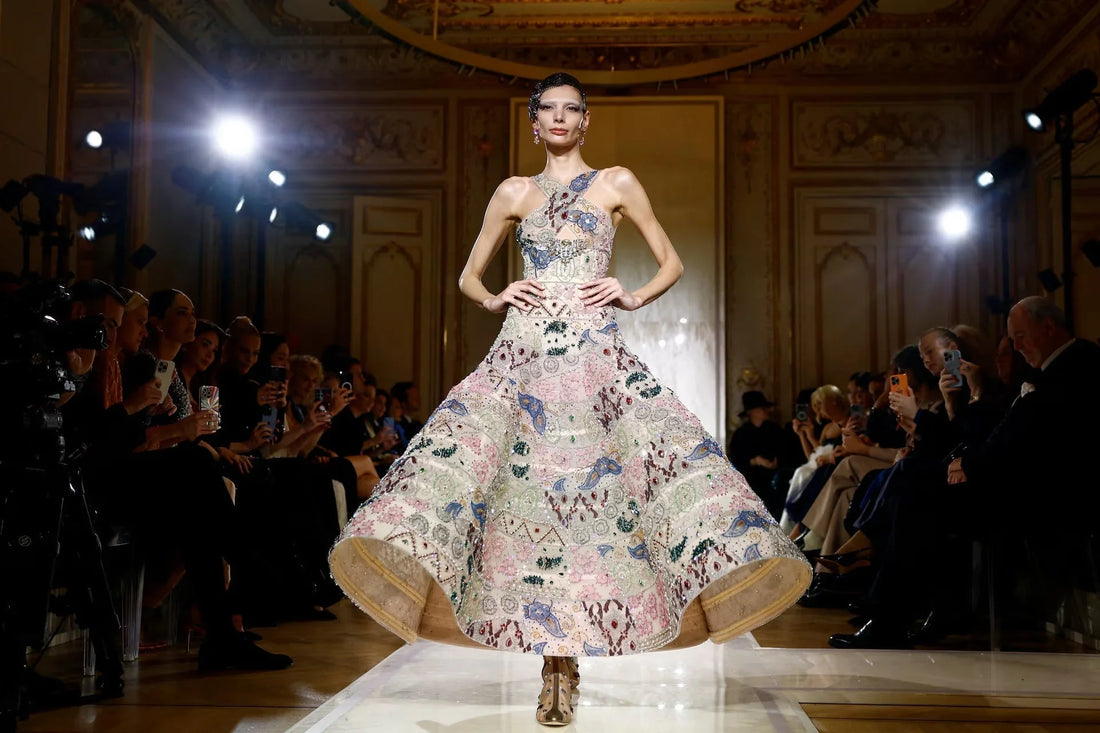Fashion with Meaning: After Armani
Share

What is fashion without meaning?
The Venice Film Festival reminded us that dressing is an art—yet much of what we saw on the red carpet felt safe: glamorous, yes, but short on imagination and cultural voice. If fashion serves only the market, can it still be called art—or is it merely content?
At the same time, Italian fashion culture is alive beyond the step-and-repeat: in exhibitions, creative platforms, and collaborations that privilege ideas over clicks. And this season begins in the shadow of loss. News reports confirmed that Giorgio Armani, the king of Italian elegance, has died at 91, closing a chapter that defined restraint, cut, and the global meaning of Made in Italy. His legacy is a reminder that style can be both commercial and cultural.
What the red carpet tells us
Red carpets reward impact; culture rewards ideas. They can coexist, but rarely do. When the camera blinks, we remember silhouettes, not hashtags: a line that flatters, a colour that breathes, a fabric that carries a place within it. That’s Italian fashion culture at its best—rooted in craft, proportion, and time.
Where is the courage?
- Courage is choosing materials that age beautifully, not trends that age quickly.
- Courage is cutting a quieter silhouette because the body matters more than the logo.
- Courage is crediting artisans and regions, not just stylists.

The Armani lesson
Armani taught the world the power of quiet luxury: the jacket that changed posture, the suit that moved like air, the palette that whispered. He believed clothes are architecture for life. Culture lives there—not in noise, but in form, fabric and intention. That belief maps perfectly to what we do at Midsummer: build sleep architecture with the same patience and respect for materials.
Meaning is what remains when the trend is gone.
Five ways fashion can reclaim culture (and how we apply them)
-
Material truth
Use fibres and finishes that feel honest—linen, wool, silk—so the hand tells a story. Our beds favour natural fibres and breathable construction. -
Longevity as design
Pieces should earn patina, not planned obsolescence. We design for decades, with replaceable layers and serviceable builds. -
Regional craft
Celebrate ateliers and territories; credit the human hand. Italian upholsterers, slow stitching, and partners known for excellence. -
Original voice
Trend can follow; culture must lead. -
Responsibility woven in
Fewer, better things; lower waste; mindful sourcing. Natural, long-life materials reduce replacement cycles and landfill.
These principles are how Italian fashion culture can move past spectacle—and how a design house can serve people, not just platforms.

The season ahead
As we step into a new season without Armani, the question is urgent: will fashion reclaim its cultural role, or remain trapped in spectacle and sales? We choose culture—every day, in every stitch. Because the bedroom deserves the same seriousness as the runway: quiet luxury that restores, not distracts.
- Explore our craft: Bed Systems
- Read the stories: Download the Dream
- Learn more about materials: Mattresses
This reflection honours Giorgio Armani’s legacy while asking fashion to choose meaning again. That’s where culture lives—and where design truly belongs.




